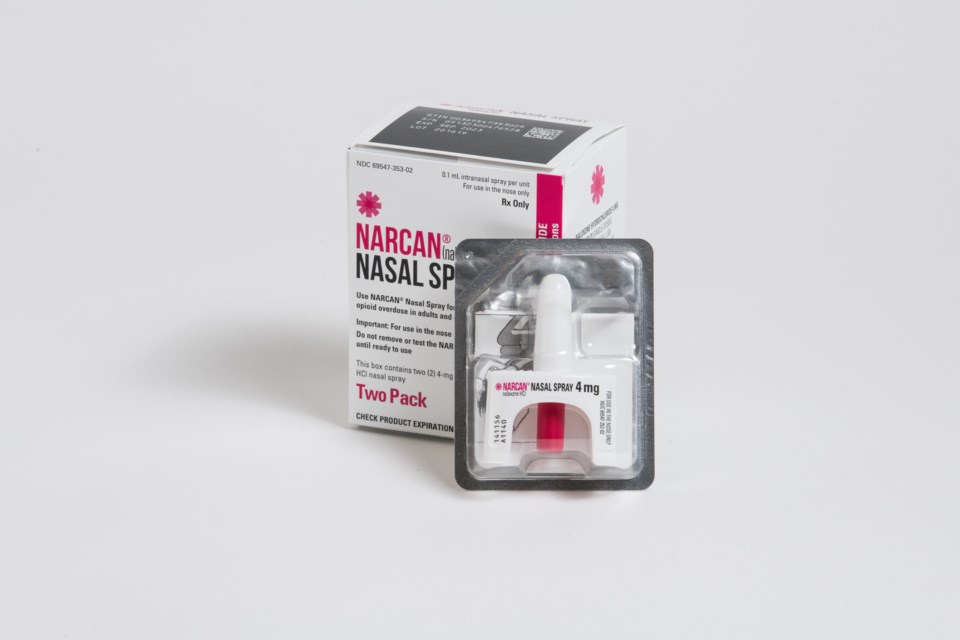With opioid drug overdoses on the rise, many public institutions, including schools and paramedics, are keeping naloxone on hand. As more places adopt the practice, including some individuals, it is important to know what experts are saying about the drug.
Noloxone is a medicine that rapidly reverses an opioid overdose, according to the National Institute on Drug Abuse. It is sometimes referred to as Narcan.
The drug attaches to the opioid receptors in the brain, blocking or even reversing the effects of the opioid. Naloxone has been known to return a person’s breathing to normal if they experienced an overdose, said Dr. Devin Rickett, an emergency physician and medical director of the emergency department at UCHealth Longs Peak Hospital, adding it can also restore breathing if it stopped.
Noloxone works on a variety of opioids such as fentanyl, morphine, heroin, oxycodone, methadone and more. It does not block cocaine, benzodiazepines or alcohol overdoses.
According to Rickett and the Center for Disease Control and Prevention, even if noloxone is given to someone who is not experiencing an overdose, it will not harm them.
“If you are not on regular opiate medication, then there is probably not any significant side effects to it. It can make you feel a little nauseated or have diarrhea, a little GI upset,” Rickett said.
For those on chronic pain medication, naloxone can reverse the effects of the pain medication. If a person is physically addicted to the medication then they can go through withdrawals “which is really uncomfortable but not dangerous,” Rickett said.
Noloxone can be delivered intravenously, through a nebulizer or in a nasal spray. Most public institutions house the nasal spray for ease. The type of delivery will determine how quickly the medication takes effect. If intravenously, it is 2-5 minutes, Rickett said, adding a nebulizer is 3-5 minutes and the nasal spray is 8-13 minutes.
Depending on the amount of a drug someone consumed, it can take several doses of noloxone to reverse the effects of the opioid.
People often receive two or more doses of naloxone before paramedics arrive, Rickett said. Once first responders are on the scene, they will often administer more doses of the medication until the person is stable enough to get to the hospital. The effects of noloxone can wear off before the opioid and often people need more doses once they are at the hospital, Rickett added.
“I’ve seen people who have gotten four or five doses before they have gotten to the emergency department,” Rickett said. “There is not a perfect dose that a bystander is going to figure out … If the person isn’t waking up, I would keep giving them everything there until the paramedics arrive.”
Those who may be at risk of an opioid drug overdose in Colorado can access the drug fairly easily. A program through the Colorodo Naloxone Project provides access to the medication through area hospitals. Colorado Naloxone Project provides grant funding to cover the costs of noloxone to at-risk patients before they leave the hospital, according to its website.
Area pharmacies also carry noloxone kits that can be purchased over the counter and without a doctor’s prescription.
“Colorado has been very aggressive about getting naloxone into as many people’s hands as possible,” Rickett said, adding people can walk into the emergency room or pharmacy at any UCHealth hospital and get the medication for free.
Longmont United and Avista Adventist hospitals are also partners with Colorado Noloxone Project.
“Carrying naloxone is no different than carrying an epinephrine auto-injector (commonly known by the brand name EpiPen) for someone with allergies. It simply provides an extra layer of protection for those at a higher risk for overdose,” the CDC states on its website.
When a person overdoses, it is unlikely they will be able to administer the medication to themselves, experts agree.
“In nearly 40% of overdose deaths, someone else was present,” the CDC reports.
It is important that those at risk share the location of the noloxone kits with friends and family who may check in with them.
“If it enters your mind at all that somebody might need it and it’s there, you should use it. There isn’t any big downturn to using it, but it could potentially save somebody’s life,” Rickett said.


